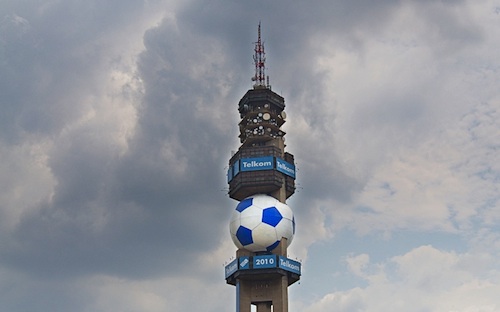
What happens to the investment that Telkom has made in fibre-optic cables and other hi-tech infrastructure for the 2010 soccer World Cup after the last whistle has been blown in the final game?
It’s a question that is worrying a number of executives in SA’s telecommunications industry.
According to Telkom, government has given the company a R950m guarantee, which it has drawn on to build telecoms infrastructure in the country’s soccer stadia.
Now, telecoms industry executives have begun asking what will happen to this infrastructure after the World Cup. Two senior executives have expressed their concerns privately to TechCentral about the situation.
There are worries that Telkom will be able to keep the infrastructure — even though it was paid for with taxpayers’ money — and use it to compete unfairly with its rivals. But that’s not so, says Telkom.
Concerned industry executives argue that the investments should be shared with other operators and not kept by the fixed-line incumbent. There’s a fear that Telkom will decommission the new infrastructure in areas where it doesn’t require it — such as in smaller towns like Rustenburg — rather than allow other operators access to it.
But Telkom’s 2010 World Cup programme director, Thami Magazi, plays down the concerns. In a written response to questions from TechCentral, he says government has only provided funding for the “access component” of the network in the stadia and for “video adaptation” from each of the venues to the International Broadcast Centre (IBC) in Johannesburg.
He says Telkom has used its own money, not government’s, to extend its core, national network.
“Telkom’s core network upgrades are company-funded as part of its own master plan, which is based on a forecast of customer growth and demand,” says Magazi.
However, Telkom has offered to “fund or buy back some of the usable telecoms-related equipment” that it has installed using government money. Other operators are likely to be interested in joining the bidding.
Magazi says there is also discussion taking place between the department of communications and “other stakeholders with respect to the legacy of the network”.
Telkom’s rivals are also concerned by the fact that the operator won the contract from government to build the infrastructure for the World Cup without it ever having gone out on tender to other telecoms operators.
Magazi concedes that this happened. But he says Telkom was “deemed” by government to have the capability to meet all of Fifa’s requirements and, as such, was “appointed by the department of communications to fulfil the role”.
Under Fifa’s IT&T (information technology and telecoms) specifications, Telkom is required to supply:
- Dual fibre-optic routes out of each stadium to the IBC, with no single point of failure;
- Four-nines (99,99%) availability of the network and zero failure during any of the World Cup matches;
- A “self-healing” capability in its core network.
Telkom has installed two hubs, or telecoms exchanges, in each of the World Cup stadia to reduce further the possibility of service interruption.
The 2010 World Cup kicks off on 11 June with a match between SA and Mexico at Soccer City in Soweto, south-west of Johannesburg. — Duncan McLeod, TechCentral
- Image credit: Nozee Le Snoop
- Subscribe to our free daily newsletter
- Follow us on Twitter or on Facebook




